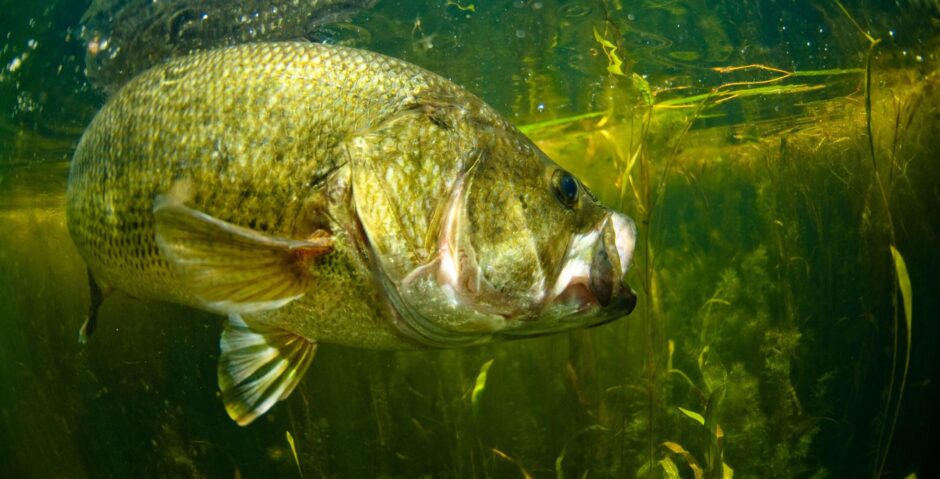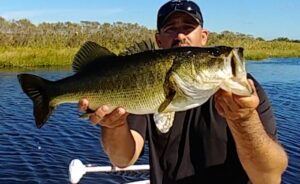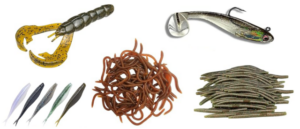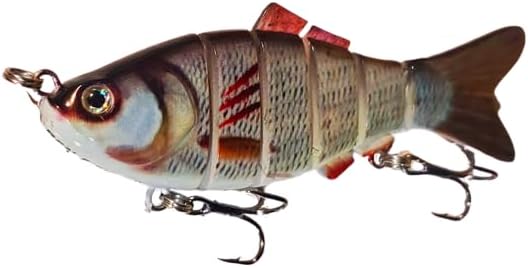The spring is the best time of year for catching good numbers of big bass. When warm fronts move in during the spring and waters start to warm into the mid to upper 50s, largemouth bass will move out of their deep water winter hangouts and into shallower water. A passing cold front will push bass back into slightly deeper water while they wait for the next warm front. If you get a few consecutive days of warmer weather, you should be able to catch bass off of primary & secondary points, shallow flats, bays and shorelines. Bass can often be found cruising bass around the shallows during the pre-spawn. Faster-moving lures such as spinners, spinnerbaits, shallow-diving crankbaits small swimbaits work well for cruising bass.
Pre-Spawn
During the pre-spawn, largemouth bass will move out of their deep water winter hangouts as water temperatures rise above 50 degrees. As the water warms from the low 50s to around 60 degrees, you should be able to find largemouth bass anywhere from primary and secondary points, quick drop-offs from 8 to 12 feet of water and on the shallow water flats and shorelines where they will eventually spawn. During the pre-spawn, water temperatures can fluctuate with the passing warm and cold fronts. The best areas to fish can fluctuate from 4 to 12 feet of water just outside of their spawning sites. During a warm front, bass will push shallower and in clearer water, you can actually see them cruising around the shallows. During a cold front, largemouth bass will fall back into deeper water as they wait for the next warm front to come through.
The pre-spawn bite can be very good, especially when the bass are cruising around the shallows. Some bass will be very aggressive while others will not even stop to look at your bait. If you see them cruising around the shallows, but they aren’t on the beds yet, it’s time to cover some water with search baits such as spinners, spinnerbaits, shallow-diving crankbaits and small swimbaits. At times, topwater lures can be very effective as well. The slower-moving baits will work, but the search baits tend to be more effective when the bass are just in cruising mode.
Fish the Staging Areas
The primary and secondary points are great places to start. The creek channel are also very productive. Bass are going to use these spots as they transition from the main lake depths to their spawning flats.
Cruisers
There are a lot of bass that won’t be on the beds yet and they can be often found cruising in the shallows. At times, there will be 5 or 6 bass together just cruising the flats and shorelines as they look for something to eat. Present a bait to these fish without spooking them and you’ll definitely catch some of them.
Early Weeds Attract Lots of Bass
The weeds that grow first will attract a lot of bass. Find the coves, inlets and bays that have green weeds and you’ll find plenty of largemouth bass too.
Murky Water Warms Faster
Fish the murky lakes and ponds if you find to want to find more active bass early in the year. A 5 degree difference can make fishing so much easier when targeting bass in the spring.
Post Spawn
The bigger females will go into deeper water to rest after they are done spawning. The smaller males will stay near the beds to help protect them from predators. During the post-spawn, anglers tend to catch a lot smaller fish on average than during the pre-spawn and actual spawn. Males can easily be caught on a variety of baits because they are super aggressive while protecting the nest. If you are fishing regularly, you can tell when the post spawn occurs because you will stop seeing fish on the beds and you’ll start catching lots of smaller males in the shallows. The bigger females will be resting in deeper water and while it is not impossible to catch a big female just after the spawn, it is much more difficult and it will take some skill and patience to get these fish to eat. About 7 to 10 days after the spawn is complete, the bite tends to get better for the bigger females. Once the water continues to warm, the summer pattern starts to set it.
Wait it Out
Sounds dumb, but taking a week off from fishing can make it less frustrating. Get some stuff done around the house and come back a week to 10 days after the fishing gets real tough and the bite should be back on again.
Fish Deeper
A lot of the bigger bass move out to deeper water after they spawn. Spend more time in the depths and expect less bites. The ones you get though will be much more quality than the ones you will get in the shallows.
Downsize and Fish Shallow
A lot of smaller bass will remain in the shallows, so if you’re just looking for action, finesse it up and you’ll still get plenty of bites. Just don’t expect to see that many big fish.
[wpinsertshortcodead id="cpgud5f8d881788989"]




